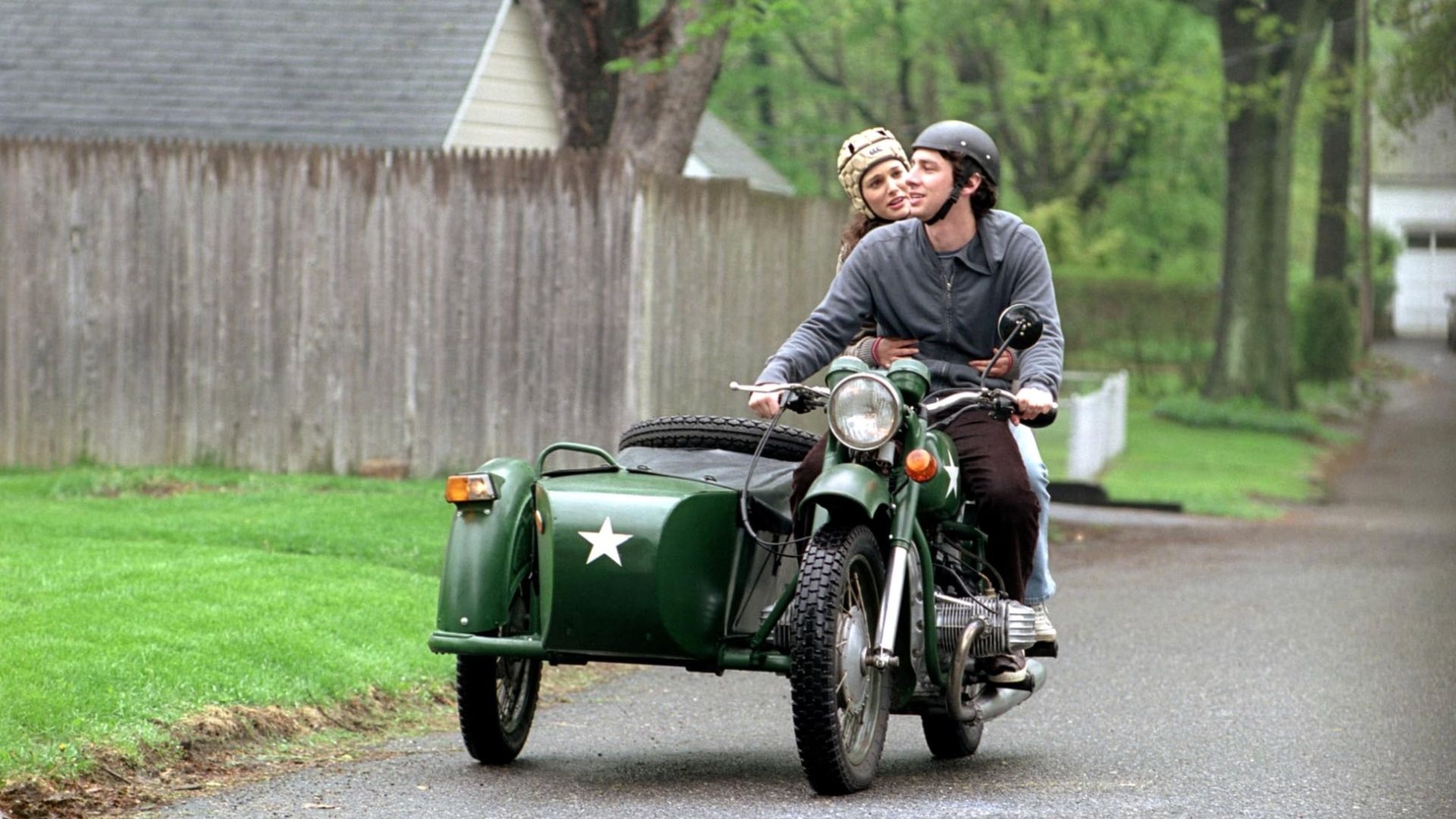
In a review of “Elizabethtown,” film critic Nathan Rabin coined a term that — much to his surprise and regret — became hardlined into the teenage and 20-something psyche.
Although the Manic Pixie Dream Girl (MPDG) has existed as a cinematic trope since the Golden Age of Hollywood, she wasn’t named until Rabin published his fateful piece. The MPDG terminology charmed her way into everyday society (mostly thanks to Zooey Deschanel reaching her ultimate “it girl” status), and the trend spiraled out from there.
We saw more discussions about her, spin-off tropes such as the Manic Pixie Dream Boy, and a place for her in the zeitgeist — this whimsical, magical girl who reminds us all (specifically, young men) what it means to be full of life.
While none of these traits are necessarily negative, the MPDG is a harmful trope in the sense that she exists in the story only to develop the male lead. The MPDG rarely sees a character arc of her own, and if she does, it’s usually at the perceived expense of her male counterpart.
There’s nothing wrong with these characters until they’re turned into lazy storytelling devices that move the plot along. However, I think there’s a way to eradicate the stereotype without killing the character completely.
Who Is the Manic Pixie Dream Girl?

If you’ve heard of MPDG before, “quirky” may be the first descriptor that pops into your head. While that was a pretty defining similarity among the early-aughts version of the trope, her true definition goes slightly deeper.
In an apology article, Rabin wrote, “It’s an archetype, I realized, that taps into a particular male fantasy: of being saved from depression and ennui by a fantasy woman who sweeps in like a glittery breeze to save you from yourself, then disappears once her work is done.”
Some of the most well-known and commonly referred to modern-day MPDGs are:
- Clementine Kruczynski (Kate Winslet), “Eternal Sunshine of the Spotless Mind” (2004)
- Sam (Natalie Portman), “Garden State” (2004)
- Claire Colburn (Kirsten Dunst), “Elizabethtown” (2005)
- Summer (Zooey Deschanel), “(500) Days of Summer” (2009)
- Ramona Flowers (Mary Elizabeth Winstead), “Scott Pilgrim vs. the World” (2010)
These character types have existed before — Maude from “Harold and Maude” and Holly Golightly from “Breakfast at Tiffany’s” come to mind — proving that pairing a free-spirited woman with an apathetic man is hardly a recent trend. However, the trope itself didn’t start inducing eyerolls until the turn of the millennium.
Aside from the obvious misogyny, one complaint I’ve seen crop up is the idea that real women aren’t like this — and that’s something I’d argue. Sure, there are plenty of people out there who find inspiration from these characters or went through a phase where they modeled their personalities off of them, but that’s not what I’m saying.
Unlike sister tropes such as the Mary Sue (a female character who is perfect in both virtue and ability), the MPDG has her flaws. Clementine is impulsive, Sam is a compulsive liar, Ramona has issues with commitment, and so on. These are flawed characters, but for the most part, we like them anyway.
There are women who are like this. They’re the free spirits, the ones who know how to take up space, the ones who refuse to apologize for enjoying the things that make them happy. Why wouldn’t we love these traits in our friends, our partners, or even ourselves?
Not Erasure But a Shift

To its core, the MPDG stereotype is a sexist one — there’s a reason you typically won’t find her in queer or feminist stories. Admittedly, as a millennial who grew up watching these characters through early adulthood, I saw her appeal firsthand. It’s hard to hate a trope-y character when you want to date or be her.
Fortunately, the popularity of the Zooey-era MPDG has declined — like all tropes, the MPDG doesn’t need more screen time — but I don’t think we have to give up on MPDG-like characters altogether, especially if she’s fully realized.
Take Frances (Greta Gerwig) from “Frances Ha.” Frances is no stranger to mistakes: The entire film revolves around her struggle to make good decisions — to the point where it can be tough to watch. Nonetheless, she’s so driven by her dreams that we continue to root for her, even during those palpably tense and frustrating moments of disconnection from the world and people around her.
Now take Bella Baxter (Emma Stone) from “Poor Things.” Bella is unconventional and nonconforming: the building blocks of your usual MPDG, but she turns the trope on its head, showcasing what happens when an MPDG gains agency in the narrative. Bella’s behaviors and priorities throw every man in her life for a loop, especially because they all attempt to restrain or contain her in some way, whether out of possession, protection, or a semblance of love.
I’m sure that to each of the male characters, Bella is their MPDG (the prodigal daughter, the one that got away, etc.), but isn’t the story so much more interesting because we got to dive into the depths of her character arc instead?
As for the MPDG-driven movies like “500 Days of Summer” and “Eternal Sunshine of the Spotless Mind,” these stories need to happen from the men’s perspective because — sorry to say it — if it happened from the woman’s POV, there may not be a story at all. That’s not to say that she wouldn’t have a story; it would just be entirely different from what he perceives as his fairytale.
To the male lead, the MPDG is the prize, the disruptor, the motivator, the catalyst. In the MPDG’s story, that male character is … just some guy. Scott Pilgrim is just a suitor. Joel Barish is just a clingy ex. Carl Allen is just a stick in the mud. Tom Hansen is honestly just an everyday a**hole.
Bella and Frances are beautiful examples of what can happen to a movie or a story when a character with MPDG-like traits is elevated beyond a surface-level plot device. She not only becomes a more complex and engaging character, but she also uplifts the quality of the characters around her — all the more reason to try to keep that magic alive (just in a better way).
Movies With Manic Pixie Dream Girls

Whether or not you’re already familiar with films that feature MPDGs, below is a list that’ll help illustrate why this trope started appearing and evolved over time.
- “Bringing Up Baby” (1938): Rent or buy on Amazon Prime Video
- “The Apartment” (1960): Stream on Tubi
- “Breakfast at Tiffany’s” (1961): Stream on Amazon Prime Video
- “I Love You, Alice B. Toklas!” (1968): Rent or buy on Apple TV+
- “Harold and Maude” (1971): Stream on Pluto TV
- “Butterflies Are Free” (1972): Stream on fuboTV
- “Annie Hall” (1977): Rent or buy on Amazon Prime Video
- “Something Wild” (1986): Stream on Amazon Prime Video
- “L.A. Story” (1991): Buy or rent on Apple TV+
- “What’s Eating Gilbert Grape” (1993): Buy or rent on Apple TV+
- “Almost Famous” (2000): Stream on Paramount+
- “Eternal Sunshine of the Spotless Mind” (2004): Stream on Peacock
- “Garden State” (2004): Stream on Hulu
- “Elizabethtown” (2005): Stream on fuboTV
- “Yes Man” (2008): Stream on Max
- “500 Days of Summer” (2009): Stream on Hulu
- “Unmade Beds” (2009): Stream on Tubi
- “Scott Pilgrim vs. the World” (2010): Stream on Amazon Prime Video
- “Ruby Sparks” (2012): Rent or buy on Amazon Prime Video
- “Her” (2013): Stream on Max
